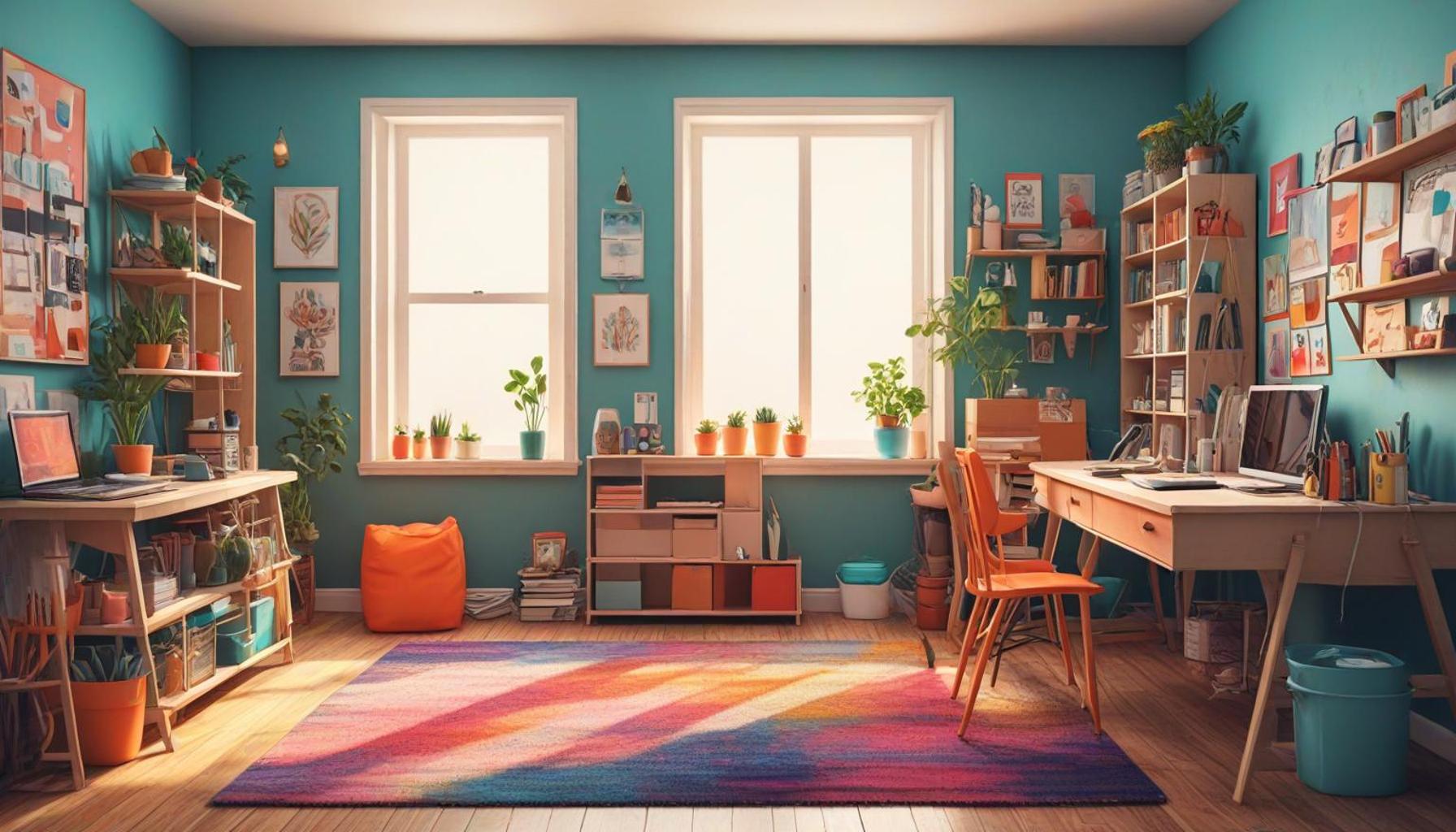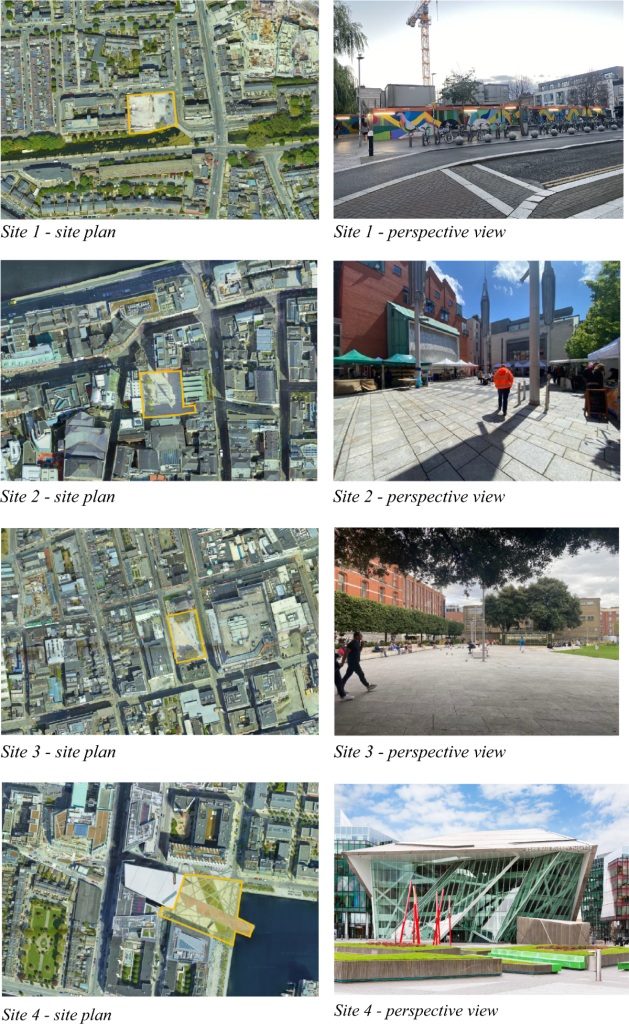Intentional Organization: How the Design of Your Spaces Can Influence Your Consumption Habits

The Influence of Space Design on Consumer Behavior
In our contemporary, bustling lives, the design of our spaces acts as a subtle yet powerful force in shaping the way we consume. From the moment you enter a supermarket to the setup of your personal workspace, every aspect of design can sway your purchasing choices. This raises an intriguing question: how cognizant are we of these underlying impacts?
Intentional organization is not merely about visual appeal; it fundamentally affects our buying patterns and overall lifestyle. Understanding how the design elements in a space can influence our decisions is vital. Let’s delve into some crucial factors:
- Accessibility: Research indicates that products placed at eye level in retail environments are significantly more likely to be selected by consumers. For example, many grocery stores strategically position their higher-margin items at eye level on shelves to encourage purchases.
- Color Schemes: The psychology of color plays a critical role in consumer behavior. Warm colors such as red and orange can stimulate appetite and encourage spending, which is why fast-food chains frequently use these tones in their branding and interior designs.
- Clutter Levels: An organized and less cluttered space often fosters mental clarity, which can mitigate impulsive buying. A study found that consumers in a tidy environment are more likely to make thoughtful purchases rather than succumbing to the chaos of clutter.
These components can dictate not only what we buy but also the frequency of our purchases. The notion of environmental cues highlights the invisible strings that pull at our buyer tendencies, often without our awareness. For instance, the layout of an Apple Store, designed to encourage exploration and engagement, illustrates how space can enhance the shopping experience and ultimately drive sales.
Through the exploration of intentional organization, individuals can cultivate a deeper awareness of their consumption habits. This article aims to provide practical strategies for transforming your spaces. By understanding and modifying the design of our environments, we can escape the spiral of unintentional spending, making way for more mindful choices.
In a world where every design element has the potential to influence our behavior, it is essential to approach our environments with a critical eye. As you read further, you’ll discover actionable insights that invite you to rethink the spaces you inhabit daily, empowering you to create an atmosphere conducive to purposeful consumption.

DISCOVER MORE: Click here for optimization strategies
Key Elements of Space Design That Impact Consumption
Understanding the intricacies of how intentional organization influences our consumption habits requires a closer examination of various design elements. These elements create a framework within which consumers operate, often subliminally guiding their choices. Below are some critical aspects to consider when evaluating how the environment around us shapes our purchasing behaviors:
- Layout and Flow: The arrangement of products and the flow within a space significantly affects consumer navigation. Retailers often employ a maze-like layout to encourage exploration, increasing the likelihood of impulse buys. Think about how many grocery stores lead you along a winding path: this design encourages you to discover items you may not have planned to purchase.
- Lighting: Proper illumination can enhance product visibility and create an ambiance that encourages shopping. Warm, inviting lighting can make a space feel comfortable, inviting consumers to linger longer. Conversely, harsh or overly dim lighting can lead to quick exits and lessened spending. For instance, soft, ambient lighting used in boutique stores often creates a sense of luxury, prompting shoppers to indulge.
- Soundscapes: The auditory environment also plays a crucial role in consumption. Background music in stores is meticulously selected—not just for its mood-enhancing effects, but also for its tempo. Studies have shown that slower music can lead to more leisurely shopping, while upbeat tunes might accelerate the pace and lead to quicker, impulse purchases. This strategic use of sound is a vital yet often overlooked aspect of intentional organization.
- Symbolism and Branding: The visual symbols and branding elements incorporated into a space can evoke emotional responses. Brands like Starbucks leverage their cozy, community-focused designs to create a sense of belonging and comfort. This emotional connection can lead to higher consumption as customers are more likely to linger and indulge when they feel at home.
Each of these design elements serves to alter our perception and experience of a space, often pushing us toward unplanned consumption. By recognizing and analyzing how these components work together, consumers can make informed decisions that promote more intentional purchasing behavior. Engaging with our environments mindfully cultivates an awareness not just of how we shop, but also of the mental processes and emotional cues that drive our choices.
Intentional organization extends beyond retail; it also applies to our personal spaces. The arrangement of our homes, home offices, or personal study areas can similarly influence our habits, encouraging productivity or relaxation. By analyzing the design frameworks of our everyday environments, we can better understand our consumption behaviors and make adjustments that foster more mindful choices.
| Category 1 | Category 2 |
|---|---|
| Space Utilization | Maximizing functionality encourages mindful purchasing. |
| Aesthetic Appeal | Visually pleasing spaces inspire sustainable choices. |
When exploring the concept of Intentional Organization, understanding how the design of your spaces impacts your consumption habits becomes paramount. One of the critical elements is Space Utilization. Areas that are well-organized and purposeful compel individuals to think critically about their needs, encouraging them to make judicious purchases rather than impulsive ones. For instance, a clutter-free workspace can motivate a person to avoid buying unnecessary gadgets, whereas an organized kitchen may inspire them to utilize existing utensils instead of buying new ones.Another significant factor is Aesthetic Appeal. Spaces adorned with thoughtful design evoke a sense of satisfaction and positivity, which can lead to more selected and eco-conscious consumer choices. Research indicates that individuals are more likely to invest in quality items when their environment promotes appreciation and mindfulness. When your home or office reflects intentional organization, it can transform mere consumption into lasting value, nudging people towards more meaningful possessions rather than transient trends.
DISCOVER MORE: Click here to find out how emotional detachment can help
The Psychological Impact of Space on Consumer Behavior
Understanding consumer behavior through the lens of intentional organization requires a deep dive into the psychological implications of space design. When we interact with our environment, the subconscious cues emitted by these spaces can significantly steer our choices and actions. Here are some key psychological factors that tie into space design and its influence on consumption:
- Color Psychology: Colors can deeply influence emotions and decision-making. For instance, red often provokes feelings of urgency, making it a popular choice for clearance sales, while blue tends to evoke feelings of calmness and trust. Retailers utilize color schemes to create specific impressions that direct consumer behavior. A well-curated palette can subtly persuade shoppers to spend more time and money in certain sections.
- Personal Space and Comfort: The concept of personal space plays a vital role in shopping environments. A well-organized space that respects personal boundaries—through adequate aisle width and strategic arrangement of displays—allows consumers to feel more comfortable. This comfort can encourage longer shopping durations and ultimately enhance sales, as people are more likely to explore unfamiliar products when they don’t feel cramped or pressured.
- Focal Points and Product Placement: Intentional use of focal points can attract attention to specific products or sections. Retailers strategically place high-demand items at eye-level or near checkout areas, capitalizing on the natural visual hierarchy that consumers navigate. This placement can influence purchasing odds; items positioned prominently are often favored over those hidden out of sight. Such tactics highlight the importance of knowing how consumers visually engage with their surroundings.
- Social Proof and Community Layouts: Our desire to conform can drive consumption in social settings. Layouts that encourage group interaction—such as communal dining areas in restaurants or collaborative spaces in shops—can foster a sense of belonging and trigger social proof, leading to increased spending. Consumers who see others engaging and enjoying share experiences are often tempted to participate, further bolstering consumption rates.
The interplay between these psychological factors and space design not only affects purchases in retail but also influences how we consume in our daily lives. For example, the arrangement of food in our kitchens can directly impact our dietary choices. An organized refrigerator that showcases healthy produce at eye level encourages healthier eating, while snacks stored in easily accessible places lead to higher consumption. With an informed understanding of these psychological triggers, individuals can transform their home environments to favor more intentional choices.
Intentional organization also extends to digital spaces. Online shopping platforms utilize layout and design principles to guide consumers’ journeys effectively. The ease of navigation, favorable product arrangement, and visually appealing aesthetics are all designed to enhance the user experience. By applying similar principles to physical spaces, businesses and individuals alike can work to optimize how environments shape consumption habits.
DISCOVER MORE: Click here for insights on mindful consumption
Conclusion
In an era where consumer choices are more influenced by design than ever before, the concept of intentional organization takes center stage. From retail environments to our personal living spaces, the design of our surroundings plays a crucial role in shaping our consumption habits. By understanding the psychological impact of space, we can better navigate our shopping experiences and daily choices.
The use of color psychology, optimal placement of products, and spaces designed for comfort are just a few tactics that can significantly affect our decisions. Similarly, the principles of focal points and social proof can create pathways that lead us towards specific purchases, often without us even realizing it. As we synthesize the insights found within our environments, it becomes clear that intentional organization not only enhances the shopping experience but also invites us to consume mindfully.
Moreover, the lessons on space design extend beyond retail; they hold potential for changing how we approach our home lives. By rethinking the organization of our kitchens, living rooms, and even our digital spaces, we can foster habits that align with our values and intentions, such as promoting healthy eating or reducing unnecessary spending.
As we reflect on the considerable influence that our spaces wield over our behaviors, it becomes evident that by embracing intentional organization, we empower ourselves to take control over our consumption habits. This understanding urges us to consider not just what we buy, but how our environments shape those choices and the lifestyle we cultivate. The exploration of intentional organization is not a mere trend; it carries the potential for profound personal transformation in the way we consume.
Related posts:
How Emotional Detachment Eases Clutter Reduction in Our Lives
Clutter Reduction and Mental Health: How an Organized Environment Can Improve Your Well-Being
Disorder and Emotional Connections: Exploring the Link between Objects and Memories
The Reduction of Disorder as a Lifestyle: Incorporating Minimalism into Daily Life
Disorder and Sustainability: How Minimalism Practices Contribute to a Greener World
The Psychology of Detachment: How Reducing Clutter Can Improve Your Emotional Well-Being

Linda Carter is a writer and organization expert specializing in minimalism and personal organization. With extensive experience helping individuals create clutter-free, functional spaces and adopt mindful habits, Linda shares her knowledge on our platform. Her goal is to empower readers with practical advice and strategies to simplify their lives, stay organized, and achieve a sense of calm and balance in their daily routines.